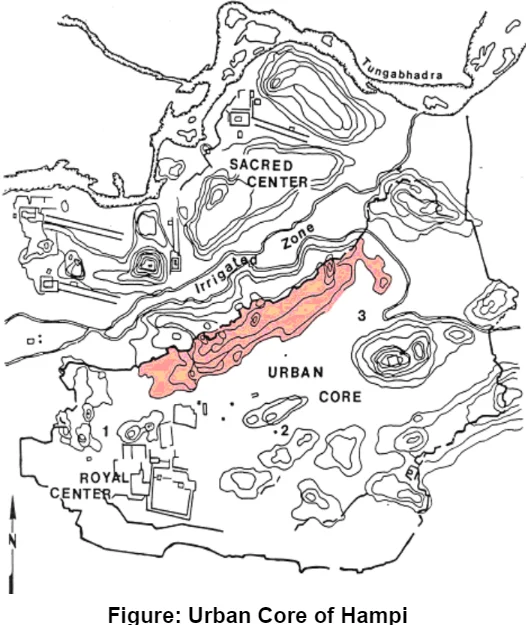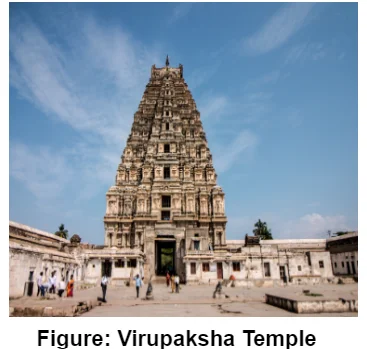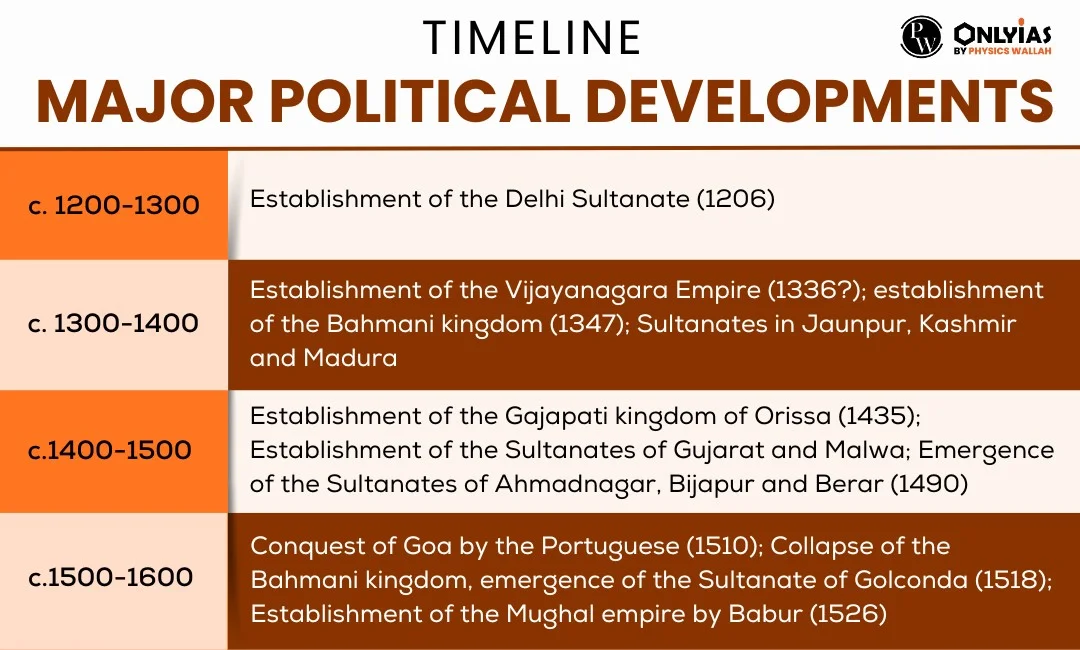Introduction
The architecture of Hampi, the capital city of the Vijayanagar Empire, reflects a blend of indigenous Provida style and Indo-Islamic influences. Accounts from travellers like Nicolo de Conti and Domingo Paes provide descriptions of its grandeur. Fortifications, urban core structures, and water management systems showcase the city’s advanced planning and engineering.
Architectural Marvels of Vijayanagar: Blending Tradition and Innovation in Hampi
- Sources of Information: Accounts of Nicolo de Conti, Abdur Razzaq, and Afanasii Nikitin, all of whom visited the city in the fifteenth century, and those of Duarte Barbosa, Domingo Paes (compared the capital city of Vijayanagara with Rome), and Fernao Nuniz from Portugal, who came in the sixteenth century provide the descriptions of Vijayanagar city.
- Fortification of Hampi: Abdur Razzaq mentioned seven lines of forts in Hampi, which encircled not only the city but also its agricultural hinterland and forests.
- Construction Techniques and Materials: No mortar or cementing agent was employed anywhere in the construction.
- Fortification and Agricultural Integratio: Great fortress walls also enclosed agricultural tracts.
- Indo-Islamic Features: The arch and dome on the gateway represented features of Indo-Islamic architecture
- Provida Style: Though often characterized as Dravida style, it had its own distinct features which is called the Provida style(having a large number of pillars and piers).
1. Urban Core
- Syncretic Architecture: Tombs and Mosques located here have distinctive functions, yet their architecture resembles that of the mandapas found in the temples of Hampi.

- Diversity of Cults: The entire area was dotted with numerous shrines and small temples, pointing to the prevalence of a variety of cults, perhaps supported by different communities.
- Water Resources: As this is one of the most arid zones of the peninsula, elaborate arrangements had to be made to store rainwater and conduct it to the city:
- Kamalapuram tank, Hiriya canal (water sourced from Tungabhadra, apparently built by kings of the Sangama dynasty).
- The city had an elaborate canal system drawing water from the Tungabhadra.
- Sacred Centre and Royal Centre: Vijayanagar City was divided into the Sacred Centre and the Royal Centre.
- Buildings located in the royal centre: Mahanavami Dibba, Lotus Mahal, Hazara Rama temple, etc.
2. Mahanavami Dibba
- Elevated Location: Positioned atop the city’s highest point, with indications of supporting a wooden structure.
- Ritual Significance: The structure likely featured rituals linked to Mahanavami, a significant day in the ten-day Hindu autumn festival (known as Dussehra in North India).
- Descriptive Title: Described as the house of victory by Domingo Paes.
3. Hazara Rama temple:
- Themes: Scenes from the Ramayana are sculpted on the inner walls of the shrine.
- Temple Distribution: While most temples were located in the sacred centre, there were several in the royal centre as well.
- Sacred Centre Included:
- Gopurams and Mandapas: Raya Gopurams or royal gateways often dwarfed the towers on the central shrines.
- Kalyan Mandapas: used for divine weddings, was a notable feature of temple construction during this period. [UPSC 2019]
- Royal portrait sculptures were displayed in temples.
4. Virupaksha Temple (Shiva Temple):
- Virupaksha was the guardian deity of the kingdom.

- The hall in front of the main shrine was built by Krishnadeva Raya to mark his accession.
- Vitthala temple (Vishnu Temple; Vitthala, a form of Vishnu generally worshipped in Maharashtra.)
- It has several halls and a unique shrine designed as a chariot. A characteristic feature of the temple complex is the chariot street that extends from the temple gopuram in a straight line.
- It was also famous for Musical pillars. [UPSC 2007]
- It represents the culmination of Vijayanagara temple architecture.
- It was built in the 15th century, during the rule of Devaraya II.
- Jaina temples of the pre-Vijayanagara period were also found, indicating the existence of several sacred traditions in the area.

Conclusion
The architectural excellence of Vijayanagar City, including its fortifications, temples, and water management systems, attests to the empire’s sophistication and engineering prowess. Through a fusion of indigenous styles and external influences, Hampi emerged as a cultural and religious hub, leaving a lasting legacy in South Indian architecture.
![]() May 14, 2024
May 14, 2024
![]() 2536
2536
![]() 0
0


